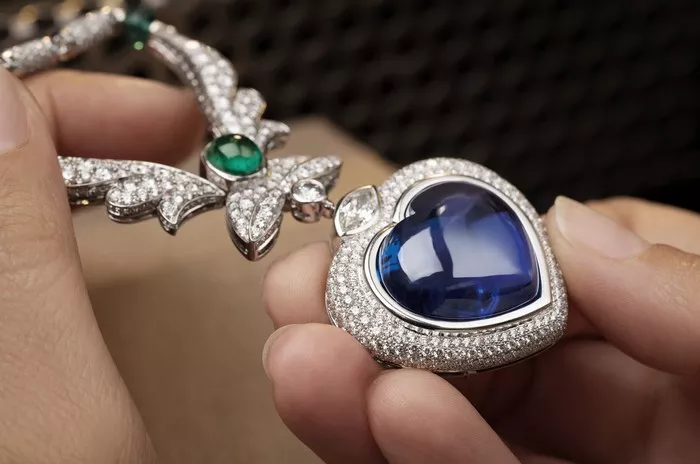Birthstones, with their deep-rooted connection to one’s birth month, have captivated humanity for ages. Gradually transforming into priceless treasures, these gems now grace esteemed museum exhibits like the renowned Smithsonian collection.
5. Tanzanite
Associated with: December
Average Market Value: $1,000,000 per kilogram
Highest Recorded Value: Approximately $3.3 million
Tanzanite, a mineral composed of zoisite, reveals a unique allure. With a hardness rating of 6-6.5 on the Mohs scale, it is slightly softer than sapphire. Its alluring color spectrum leans towards purple, setting it apart. The mineral’s relatively delicate nature restricts its use in jewelry, relegating tanzanite crystals mainly to coveted collector’s items.
Enthusiasts find fascination in the dynamic saturation and color transition visible from different angles. While some specimens undergo heat treatments to intensify their hues, the true treasures remain the natural, deep blue tanzanite gems.
Scarcity significantly contributes to tanzanite’s exorbitant value. This gem remains confined to a small Tanzanian region, enhancing its mystique and allure.
4. Sapphire
Associated with: September
Average Market Value: $1,750,000 per kilogram
Highest Recorded Value: $6.7 million
Sapphire, the azure manifestation of corundum, reigns as the pinnacle of coveted blue gemstones. Earning distinction as September’s birthstone, it shares the Mohs hardness scale with the illustrious ruby. Beyond the iconic blue, sapphires span a spectrum of hues, aptly termed “fancy sapphires.”
Value hinges upon the intensity and depth of the sapphire’s hue. The richer the blue, the greater the gem’s allure. Kashmir sapphires, hailing from the India-Pakistan border region, command reverence for their exceptional vibrancy and rarity.
3. Ruby
Associated with: July
Average Market Value: $3,500,000 per kilogram
Highest Recorded Value: $14.2 million
July’s birthstone, the ruby, boasts an unparalleled fiery red. With a Mohs hardness of 9, rivaled only by diamonds, rubies offer both resplendence and durability, rendering them a gemological masterpiece.
Belonging to the corundum family, akin to sapphires, rubies’ unique hues and compositions stem from mineral impurities. Larger, clearer, and more vivid specimens command exceptional worth. Natural rubies, prized above synthetics, occasionally exhibit asterism—a star-like play of light when polished.
The illustrious Jubilee Ruby, a 15.99-carat marvel, stands as a testament, fetching an astonishing $14.2 million at U.S. auction.
2. Alexandrite
Associated with: June
Average Market Value: $5,000,000 per kilogram
Highest Recorded Value: Approximately $100,000
Bearing the mineral beryllium, alexandrite claims its place among the toughest gemstones with a Mohs rating of 8.5. June’s gem showcases a captivating color shift, unveiling a reddish hue under artificial light. The degree of this transformation directly influences its value.
Rareness further fuels alexandrite’s allure. While most specimens weigh under two carats, the record-holding cut stone stuns with a staggering 141.92 carats.
1. Diamond
Associated with: April
Average Market Value: $6,000,000 per kilogram
Highest Recorded Value: $71.2 million
April’s emblematic birthstone, the diamond, remains an unrivaled global icon. Comprising pure carbon, its unparalleled hardness underscores its astronomical value. While virtually impervious to scratches, diamonds pose a challenge to craftsmen due to their brittleness.
Their scintillating brilliance results from efficient light refraction—a hallmark trait. While industrial-grade diamonds abound, those of gem quality prove elusive. Predominantly colorless, diamonds span an array of hues, with vividly colored variants reigning supreme in value.
The Pink Star diamond, last auctioned in Hong Kong in 2017, stands as a testament to the rarest of gems.


